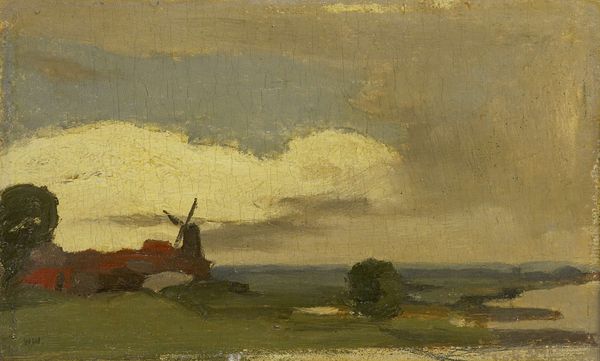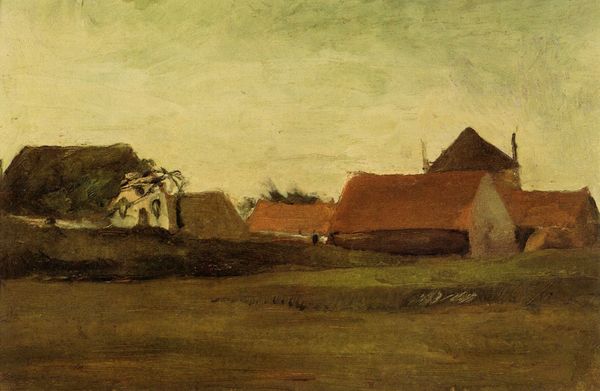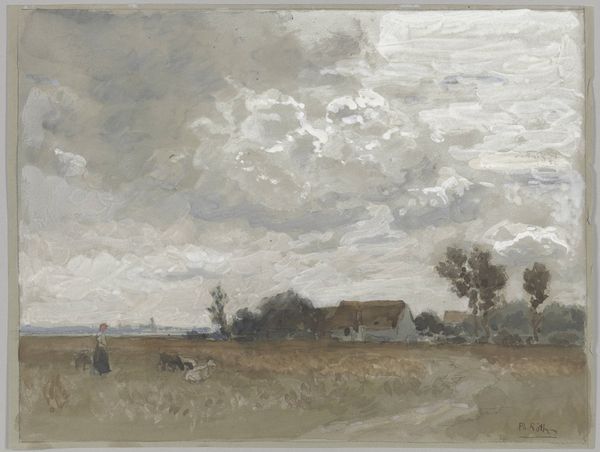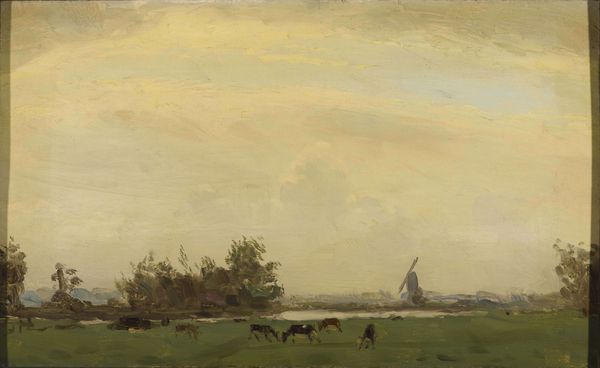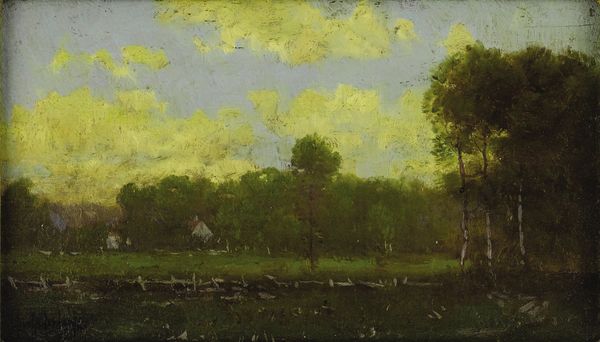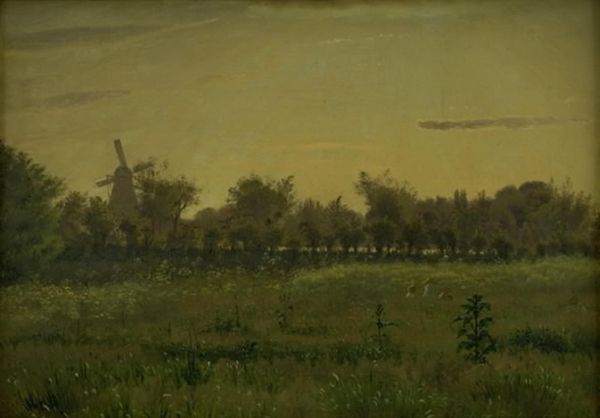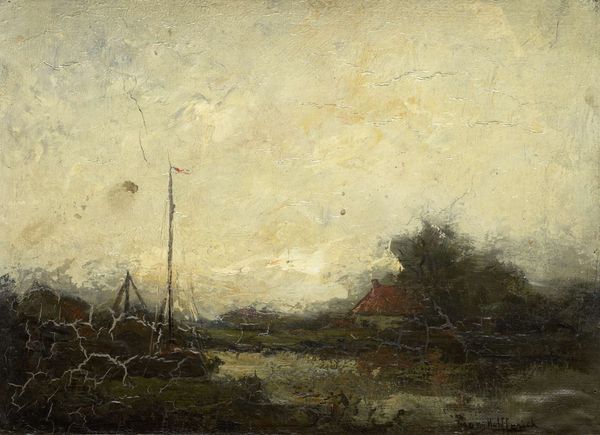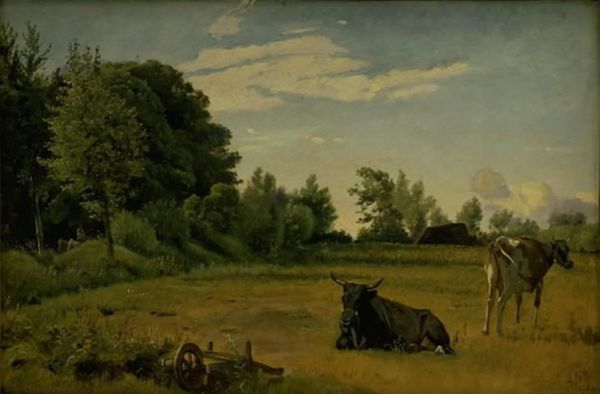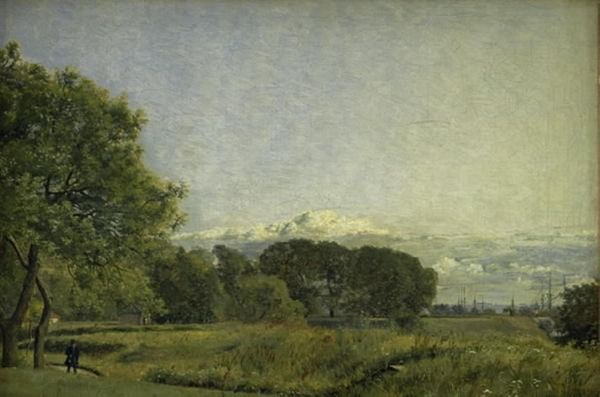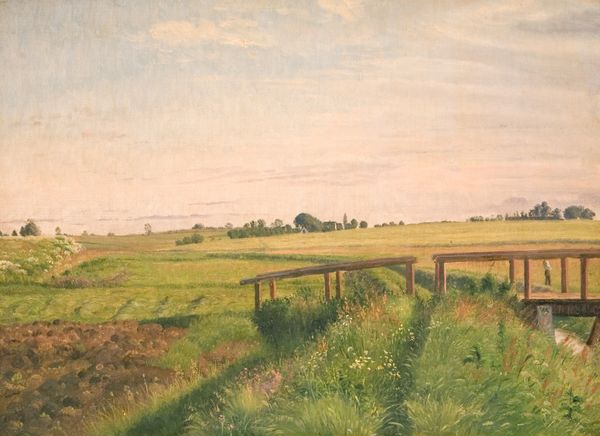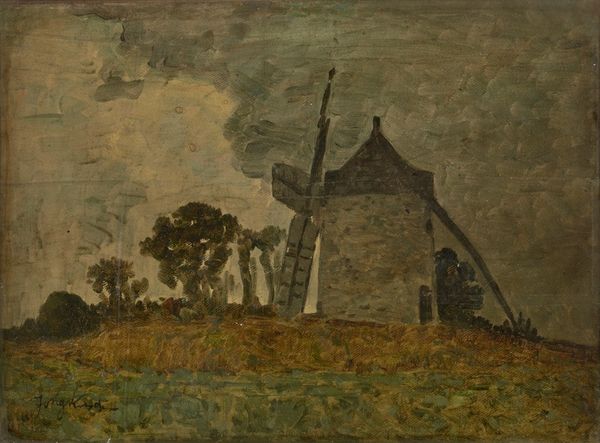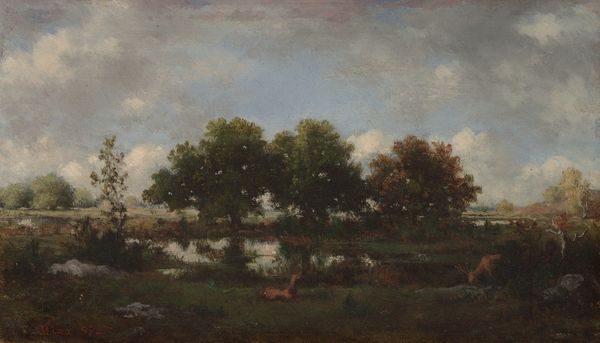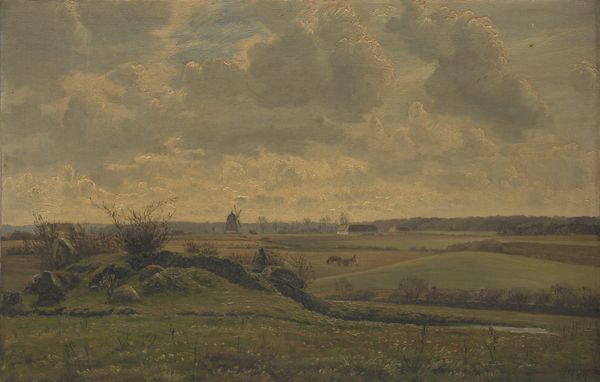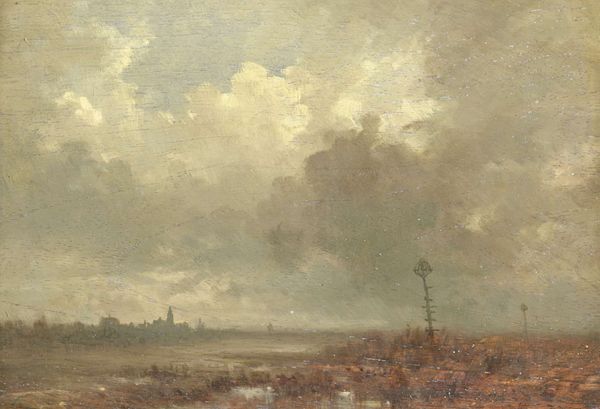
View from a Window in Toldbodvej Looking Towards the Citadel in Copenhagen 1833
0:00
0:00
christenkobke
National Gallery of Denmark (Statens Museum for Kunst), Copenhagen, Denmark
painting, plein-air, oil-paint
#
sky
#
water colours
#
painting
#
plein-air
#
oil-paint
#
landscape
#
romanticism
#
cloud
#
painting painterly
#
cityscape
#
realism
Copyright: Public domain
Christen Købke captured this view from a window in Toldbodvej towards the Citadel in Copenhagen with oil on canvas. Here, the windmill stands prominently against the sky, a motif resonating through art history. In Dutch Golden Age paintings, windmills symbolized prosperity and the triumph of human ingenuity over nature. Yet, their presence extends further back, echoing in ancient Greek and Roman depictions of agricultural life, where the turning wheel represented the cycle of life and fate. Consider the psychological weight these images carry. Windmills, with their rhythmic turning, evoke a sense of constant change, and the relentless march of time. As symbols, they evolve, becoming potent reminders of our connection to both the natural world and our technological progress. These emotional and subconscious associations tap into something deeply human, making the windmill a recurring and evocative symbol throughout our cultural memory.
Comments
No comments
Be the first to comment and join the conversation on the ultimate creative platform.
